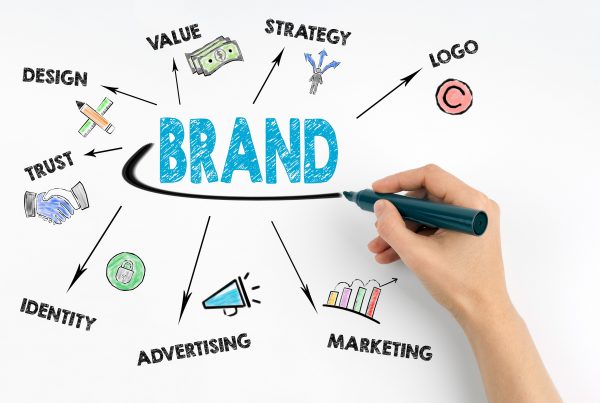Table of Contents
Thought leadership means different things to people, or so it seems. In fact a quick survey on this term, even among just a few of your colleagues will give you an idea about how vast (and sometimes mystifying) this term really is.
Just to illustrate, say you want to go in for the latest ‘in’ haircut, who do you usually turn to? The hippest, fad following, fashion conscious colleague or perhaps your trusted confidante- the one you usually go to when you’re in dire need of life saving advice. Chances are you’ll do both, speak to your best friend but probably go with the recommendations of your colleague. This, my friend, is a form of thought leadership.
Defining thought leadership
Thought leadership can best be defined as an extraordinary content marketing that is useful, has indepth know-how about the said topic and is broad-casted by someone who is considered a guru on the subject. The articles, blog posts or content videos are comprehensive, inventive and aim to influence/ create/ build perceptions about the said business.
The motive of thought leadership is not to create content that sells; rather it is to provide relevant, contextual inputs that make a tangible difference in the follower’s lives. However, it’s not simply a philanthropic gesture, it is rather a more personalised way of reaching out to people who believe in the ideas and who empathise/ patronise the doctrine. That the followers endorse or choose to buy because they believe in the doctrine is an important, call to action response that is usually expected from this form of content marketing.
Forms of Thought Leadership
Thought leadership is a very powerful tool that has worked from time immemorial, in fact most of us have always relied on the guidance/ beliefs of subject matter experts, be it in the form of newspaper columnists or the close knit coterie of our friends and relatives. In the realm of the digital medium, this takes on the form of Thought Leadership Content Marketing.
While it can be said that the product/ business is a catalytic participant in the entire process, the thought leaders real aim is to create some sort of an entertainment, to please, create a CTA or maybe just to educate those who are already familiar with the product/ brand.
Our take on the different forms of Thought Leadership that are gaining traction in the digital marketing world-
Blogs
Tried and tested, blogs have been a great way of publishing your thought leadership viewpoint online. Some choose to publish their blogs and maintain a relationship with their followers through a well connected chain of internal links, back links and subscription of their newsletters. Most others prefer to channel their views through a third party site or through an organisation’s website. This way the company leverages the thought leader and the followers who subscribe to his/her views.
Webinars
Webinars are a very useful medium for creating an audio/ visual opportunity for disseminating viewpoints by the thought leader. It serves to allow for experts to share their experience of the product/ business and inform about possible upgrades in one seamless platform. The webinar can be uploaded for viewing later and can be easily shared, thereby creating a further prospect of propaganda.
Product based Thought Leadership
As is explicitly understood, thought leadership is not restricted to any one genre and there can be such SME’s in every field. So is the case with product based thought leadership, in which case the product manager/ expert publishes content that is credible and trustworthy, besides convincing enough so as to influence others of his/ her viewpoints on the product qualities and features.
Industry Thought Leadership
Effective thought leadership content for industry based viewpoints are effective not just for the followers/ users but even for the person in question. This is a very efficient form of content marketing wherein the thought leader is sharing his standpoints regarding the industry he/she operates in. The apparent perks of an effective leader are that he may even land a promotion, be invited to speak at other industry specific conferences or may even put him/her in touch with an greater authority on the subject.
FAQ
Is Digital marketing the future?
Digital marketing is one of the ways in which you can boost the business sales like never before. Having said that, considering how reliant everyone has become on digital marketing, it is all set to rule the future. Here is why –
- The extent to which people these days are using the internet throws light on how increased internet usage would be in the days to come.
- Digital marketing is an excellent way of building brand awareness among people.
- All the digital marketing strategies put forth by the companies can be monitored as well. The expectation vs. reality picture becomes way clearer now. This further helps in opening up doors for improvement, if any.
Is digital branding the same as digital marketing?
No. Digital Marketing and Digital Branding are different from each other. Digital Marketing focusses on promoting a particular product or service, highlighting its benefits and how useful it would be to the consumers. Digital branding on the other hand is much more subtle and highlights the personality of the company or brand as a whole. Products and services will come and go. Digital marketing strategies will change to suit the seasonal needs or are tailor made for the product in question. However Digital branding is like a long tern digital marketing strategy to bolster the reputation of the company. It communicates what are the core values of the company and what they do to upkeep those values to give the best customer experience.
What are the most important principles of web design?
By now a lot of businesses have realised the importance of good web design. However there are some important principles that need to be followed to ensure that your website turns out perfect.
- Ensure the website loads fast, as this reduces website abandonment.
- Show your intent on every page so customers landing on any page are aware of what your business does.
- Keep it simple so you don’t distract visitors from their purpose, with too many elements.
- Make the navigation as easy as possible, with any part of the website accessible in 3 clicks.
- Maintain the hierarchy in the layout. You don’t want your customers to keep scrolling back up each time they want to refer something.
- Use simple, attractive and value adding content that can convince visitors into becoming customers.
- The site must be mobile friendly for customers to access it on the go.
What is the purpose of website design?
Your website is the first impression that an online customer gets of your business. It is important to make a positive impact on your clients. The website design has the potential to convert a random visitor to a customer and boost organic sales. A great web design will keep customers loyal to your brand as they find the platform comfortable and convenient to use. It provides a good UI/UX to your clients and nurtures your leads. Better the website design, more the engagement with it, bringing in more traffic. It improves the accessibility of your website to a wider audience. It has a significant influence on the brand image and it is important that you get professionals to design your website.
What are the benefits of having a website to your business?
It has come to a point that a business is only considered successful if they have a strong online presence. This is evidently done by creating a dedicated website to the brand. The benefits of owning a website for your business are,
- A credible repository of information on your business
- 24 x 7 customer access to your business
- Boosts interaction with the brand
- It helps expand your market reach
- It improve brand awareness to a global scale
- Provides you with valuable consumer insights
- Helps you beat other competitors with online presence
- Access to all digital modes of advertising
- Makes information exchange easier
What are the new SEO trends of 2021?
SEO is one of the most effective and inexpensive ways to boost traffic to your site. It can open the gateway to new customer pools, even on a global scale. The top SEO trends of 2021 are,
- Core web vitals : Loading, Interactivity and Visual Stability
- Google’s BERT: Using Machine learning and natural language processing for intent matching.
- Keyword research: To identify high ranking keywords.
- Original content: Value adding content that attracts traffic organically.
- Voice search: Voice activated searches that include colloquialisms in global languages.
- Artificial intelligence: Using AI to personalise the customer journey.
- Video marketing: For visitors to better relate to the brand with audio visual stimulation.
- Featured snippets: Elevate reputation of the business with features snippets on Google.
- Influencer SEO: Partner with social media influencers to get their following as customers.
- EAT & Branded SEO: Build expertise, authority and trust by building brand awareness.
What is the difference between website design and website development?
When searching for a web developer, it is important for you as a client to know the difference between website design and website development. The difference is quite distinct but a web developer is capable of doing both if they are skilled enough. Web design is the initial ideation and planning of a website’s layout, appearance and content. Web development is the actual process of developing code for creating the site and its subsequent maintenance. Web design is about creativity, while web development is completely technical. You need to engage the services of web developers who can help you with both, as they know how to recreate your brand personality on the website.
Why every business needs SEO?
For anyone who wants to implement digital marketing for their business, Search Engine Optimisation or SEO as it is commonly known should be the first priority. It is more than the misconception of just adding keywords to your content. When done right, SEO can do the following for you.
- Send quality traffic your way.
- Boost the business reputation
- Get results with inexpensive methods
- Increases customer engagement with the site
- Help you understand your customers
- Help you beat the competition
- Continuously evaluate and boost performance of the site










